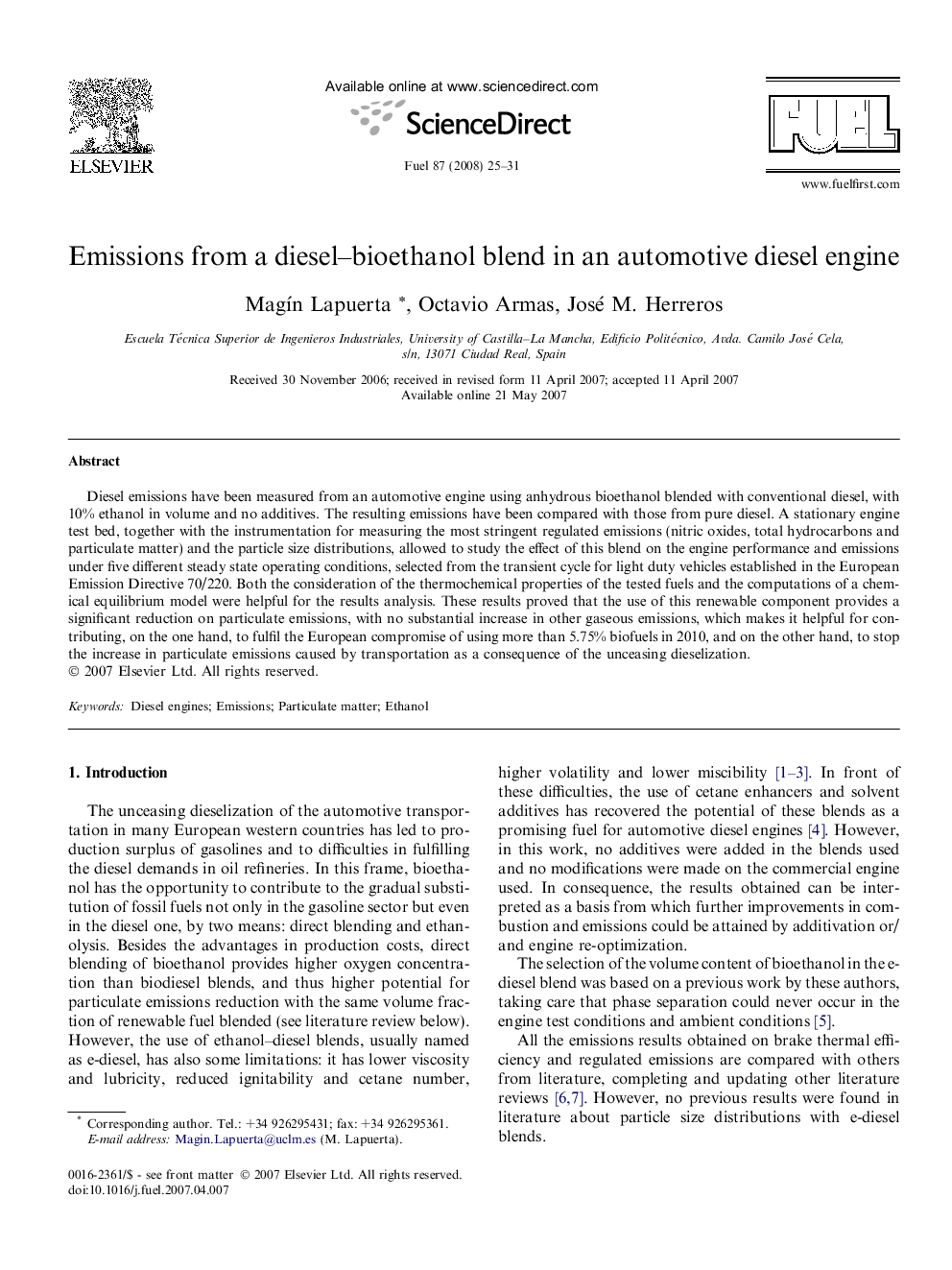| کد مقاله | کد نشریه | سال انتشار | مقاله انگلیسی | نسخه تمام متن |
|---|---|---|---|---|
| 207939 | 461232 | 2008 | 7 صفحه PDF | دانلود رایگان |

Diesel emissions have been measured from an automotive engine using anhydrous bioethanol blended with conventional diesel, with 10% ethanol in volume and no additives. The resulting emissions have been compared with those from pure diesel. A stationary engine test bed, together with the instrumentation for measuring the most stringent regulated emissions (nitric oxides, total hydrocarbons and particulate matter) and the particle size distributions, allowed to study the effect of this blend on the engine performance and emissions under five different steady state operating conditions, selected from the transient cycle for light duty vehicles established in the European Emission Directive 70/220. Both the consideration of the thermochemical properties of the tested fuels and the computations of a chemical equilibrium model were helpful for the results analysis. These results proved that the use of this renewable component provides a significant reduction on particulate emissions, with no substantial increase in other gaseous emissions, which makes it helpful for contributing, on the one hand, to fulfil the European compromise of using more than 5.75% biofuels in 2010, and on the other hand, to stop the increase in particulate emissions caused by transportation as a consequence of the unceasing dieselization.
Journal: Fuel - Volume 87, Issue 1, January 2008, Pages 25–31